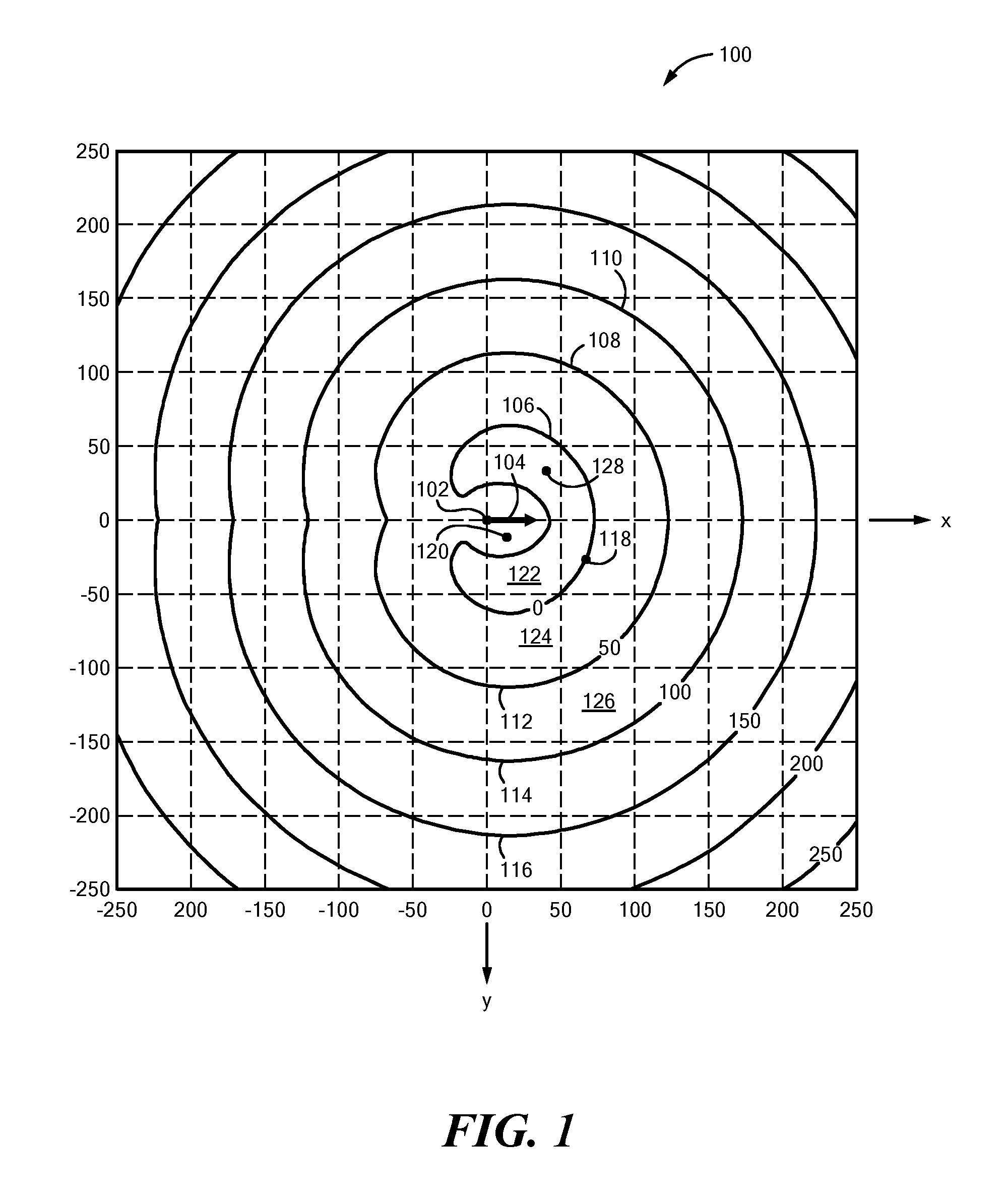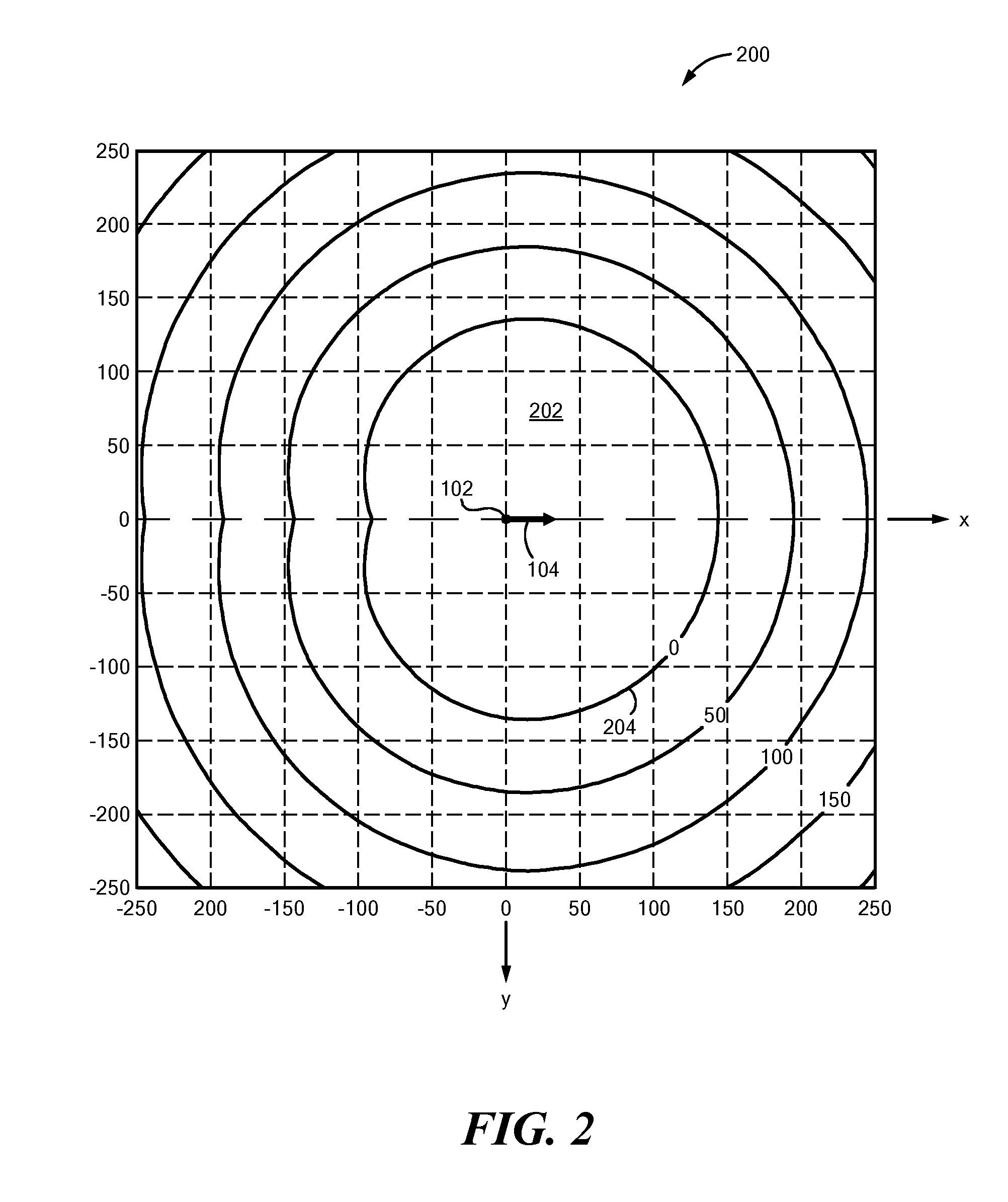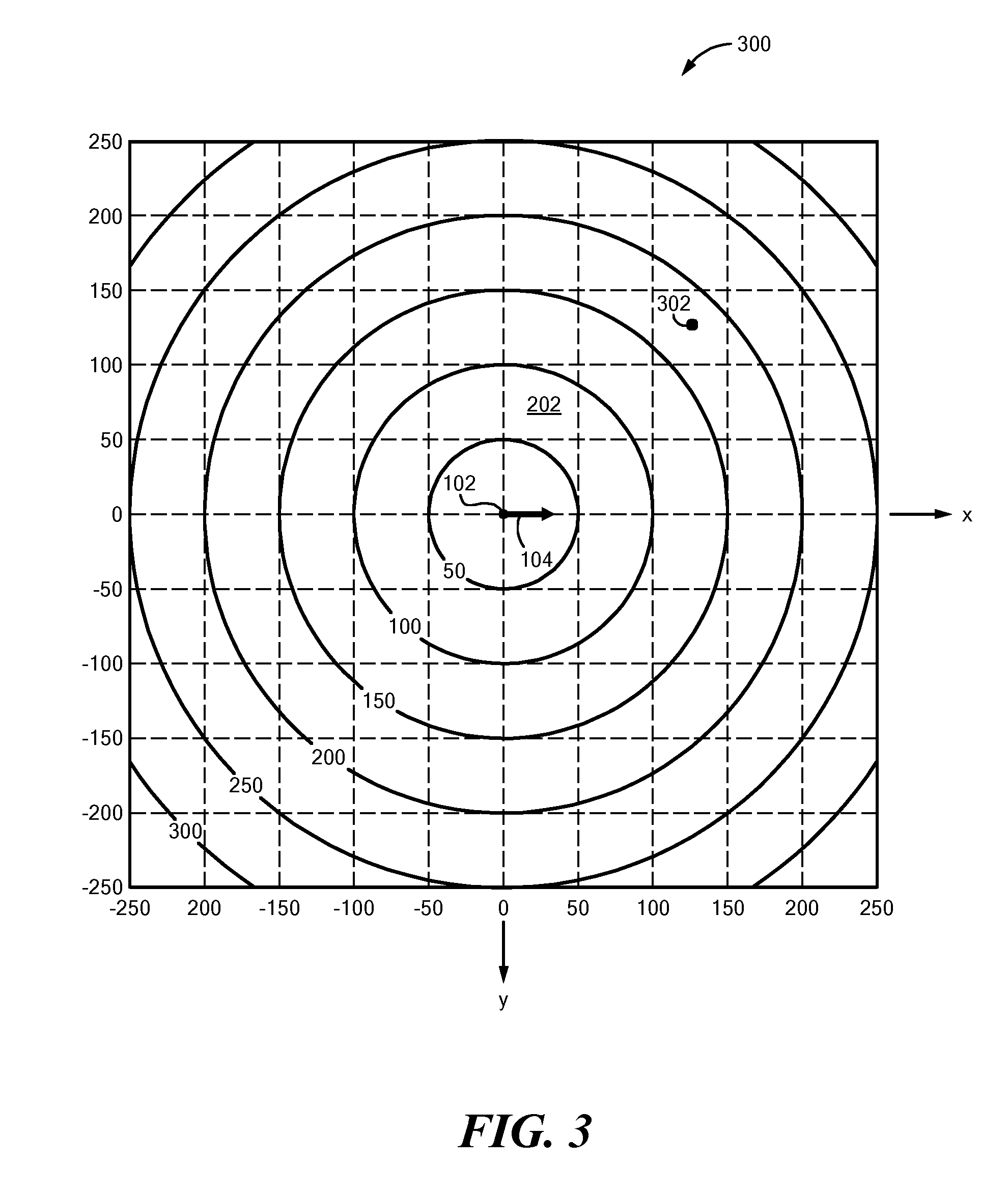Aircraft Guidance Based on Partial Differential Equation for Miss Distance
a partial differential equation and distance technology, applied in the direction of navigation instruments, instruments, process and machine control, etc., can solve problems such as landing location errors
- Summary
- Abstract
- Description
- Claims
- Application Information
AI Technical Summary
Benefits of technology
Problems solved by technology
Method used
Image
Examples
Embodiment Construction
[0008]An embodiment of the present invention provides a method for automatically guiding an aircraft. The aircraft is guided toward a target. The aircraft may be guided through wind. The wind may be variable. The aircraft has a maximum turn rate. The method includes: (a) receiving signals indicating current location, current altitude and current heading of the aircraft. (b) From the signals indicating the current location of the aircraft, current coordinates of the aircraft are automatically calculated, relative to location of the target. (c) From the signals indicating the current altitude of the aircraft, current remaining amount of time of flight of the aircraft is automatically estimated.
[0009](d) At least one component of a current gradient of function C is automatically determined. C satisfies a partial differential equation and a boundary condition. C represents miss distance as a function of at least the current heading of the aircraft, the current coordinates of the aircraf...
PUM
 Login to View More
Login to View More Abstract
Description
Claims
Application Information
 Login to View More
Login to View More - R&D
- Intellectual Property
- Life Sciences
- Materials
- Tech Scout
- Unparalleled Data Quality
- Higher Quality Content
- 60% Fewer Hallucinations
Browse by: Latest US Patents, China's latest patents, Technical Efficacy Thesaurus, Application Domain, Technology Topic, Popular Technical Reports.
© 2025 PatSnap. All rights reserved.Legal|Privacy policy|Modern Slavery Act Transparency Statement|Sitemap|About US| Contact US: help@patsnap.com



